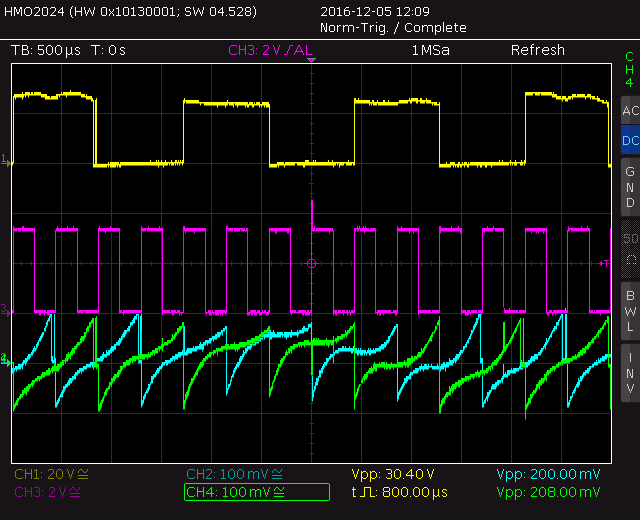I am working a stepper motor and I don't understand why the current going into the two windings are behaving as shown in the oscilloscope screenshot.
Stepper motor: :FL42STH47-1204A (4 wire) Driver: ST L6208
The driver is setup to run in full step mode and fast decay, 1.2A at 24V. Motor is running at 700rpm.
BLUE/GREEN: Winding current sense nodes RED: Step YELLOW: Winding
At lower speed, the currents are charging/discharging up following the normal exponential fashion, but as I increase the speed the currents start to show this strange behaviour. Initially I thought that this was due to the driver not able to cope with the current demand but the same result was obtained with a more powerful driver. This leads me think that it down to basic inductance physics but I can't figure out what is causing this. Has anyone idea of what is going on? Thank you.

